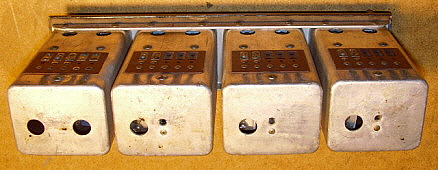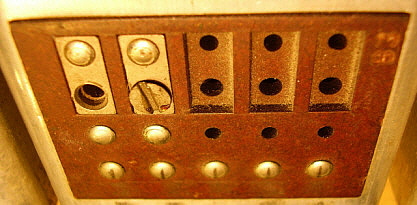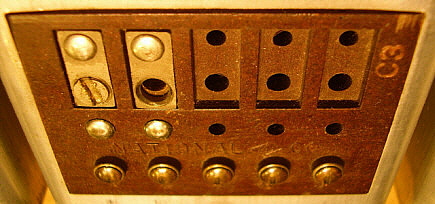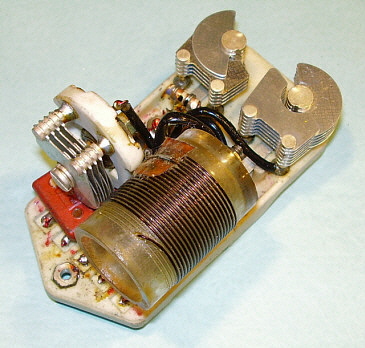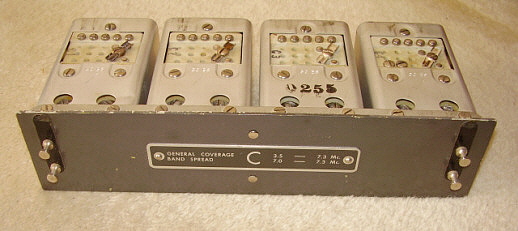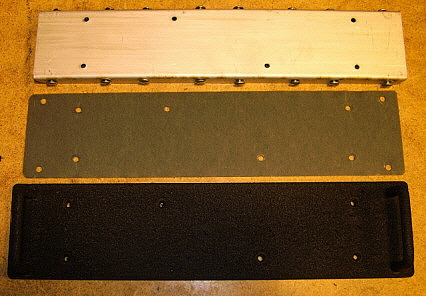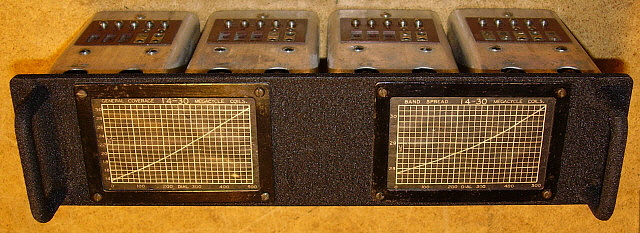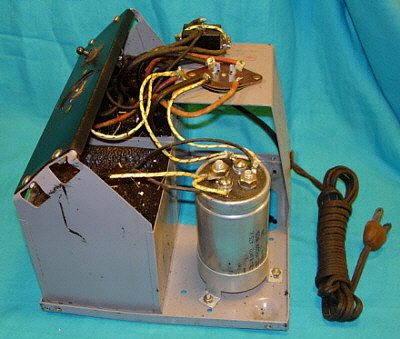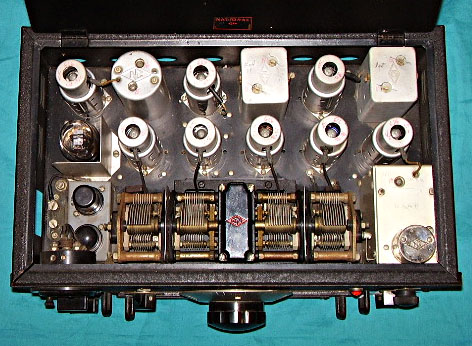|
HRO Serial
Number Log (Pre-war and Wartime)
HRO:
D-17, D-21, D-34, D-35, D-38(R), D-46, D-49 (R), D-52, D-65 (R), D-72,
D-76, E-18, E-50, E-55, E-58, E-68,
E-76, E-159, E-167, E-169, E-170, E-172, E-178, F-09, F-16(R), F-51, F-58,
F-146,
G-63, G-91,
G-113(Nat'lMod), G-126, G-193, G-217, G-235, H-7, H-20, H-103, H-121, H-146,
HRO Senior:
J-60, J-123(R), J-146, K-38, K-83(R), K-91(R-Grey Panel), K-104, L-36,
L-73(R), L-114,
L-175(R),
L-178(mod'd), L-184, M-108, M-167(R), M-183, N-25, N-29, N-79,
N-130, N-146, N-162, P-8, P-16, P-35, P-98, R-54, R-207, S-64, S-208, T-87, T-239, V-22, V-27 (Orig. Gray Wrinkle paint),
V-35(scrapUSN), V-77, V-214, X-61, X-204, Y-53, 129-A,
7-C, 233-C, 231-D(CollinsSAF) 30-F, 197-F, 164-G, 170-H, 182-H, 41-K (RCAF rcvr), 463-K,
169-L(R), 434-L(R)
HRO Junior:
J-16, J-125, J-248(Am.Airlines Mod'd), L-58(R), N-224, P-116, O-250(R-WWII
Mil.), Y-217, 326-K, 103-L,
HRO-M, HRO-MX,
Canadian HRO: A-67, A-69, A-117, A-181, AP-195,
AP-461, AP-361(Blue-CAN),
AP-634(RCCS), AP-675(M),
AP-1001, B-72, B-631(MX), C-262(MX), C-392(MX), C-638, C-737(MX),
C-896(MX),
D-656(MX),
D-706(MX), E-239(MX),
F-180(SC R-106), F-260(MX), F-363(MX), F-443, H-420, J-942(R-106), L-427(M), L-481,
M-243,
M-326, M-400,
O-4, P-161, P-240, P-377, P-554, P-861(R106), PC-67, PC-83, PC-103,
PI-I-742, PP-128, PP-229(R),
PP-569,
PP-808, PP-988, PP-1133,
0605 (no letter prefix, RCCS version),
32-F, 333-L (Blue-CAN), 99-W(Blue-CAN),
197-L(RCCS),
227(R-460/RC-105),
486(R-106),
HRO-5, HRO-W: J-39, J-116(5), J-431, J-607, J-879, K-127(W-SC#85), K-184(W), K-461(W,R),
K-575(W,R-106) K-650(W),
K-724(W-SC#192)
U.S.N, - RAS, RAW,
RBJ, etc: 119(RAS), 310(RAS-2)
(R) = Rack Mount, otherwise receiver is a table
version (Nat'lMod) = Receiver modified at National
(R106) = British designation, (R-106) = Signal Corps designation (scrap)
= Receiver parted out
(W) = Signal Corps version, receiver is same as HRO-5 (USN) =
Receiver used by Navy
(mod'd) = Receiver severely ham modified (RC-105)
= USCG HRO Sr.
(Blue-CAN) = Canadian end-users, with blue panel & cabinet (if table,) may also apply for RCAF
receivers
(CollinsSAF) = French Importer Paris, special front panel
label
(RCCS) = Royal Canadian Corps of Signals special mods to HRO-M |
HRO Serial
Number Log (Post-war)
HRO-5A, HRO-5A1: K-557(TA), K-611(TA), K-785 (RA1),
L-39(TA1),
L-56(TA1),
L-80(TA1),
184 0005(TA1), 184 0008(TA1), 184 0009(RA1/HRO-5C), 184 0122 (RA1), 184 0180(TA1),
184 0205, 184
0328(TA1), 184 0346(TA1), 184 513(TA1), 184 0781(TA1), 184 0805(TA1),
184 0833(TA1),
184 0883(RA1),
184 1001(RA1),
184 1052(TA1),
184 1054(TA1), 189 0081(TA1),
HRO-6: 184 0297, 184 0697
HRO-7:
189 0131, 189 0396(T,BWF), 196 0397, 196 0546, 205 0143, 232 0094, 232 0146, 232 0391, 232 0973,
HRO-50, HRO-50-1:
280 0194(T), 280 0224(R), 280 0455(T), 293 0036(T), 293
0057(T),
293 0213(T), 293 0795(T) 293 1067(T), 311 0101(T-1), 311 0136(R), 311 0186(T-1),
311 0324(R-1), 311 0378(T-1), 311 0506(T-1), 311 0909 (R-460/UR) 327
0183(T-1), 327 0337(T-1),
HRO-60:
345 0127(T), 345 0154(T), 345 0165(R), 345 0232(T), 345 0958(R), 366
0591(T), 366 0800(T), 393 0049(T), 393 0177(T), 393 0255(R), 425
0013(T), 425 0234(T), 459 0033(T), 505 0173(T) 514 0087(T), 537
0145(USN)
(R) = Rack Mount (T)= Table Version (T-1)=
HRO-50-1 (TA1)= HRO-5TA1 (RA1)=HRO-5RA1 (BWF)=Black Wrinkle
Finish
NOTE: From late HRO-5A1 to HRO-60 all SNs are
seven digits. First three are the production run followed by a space
with the last four digits being the serial number of the specific
receiver.
|


